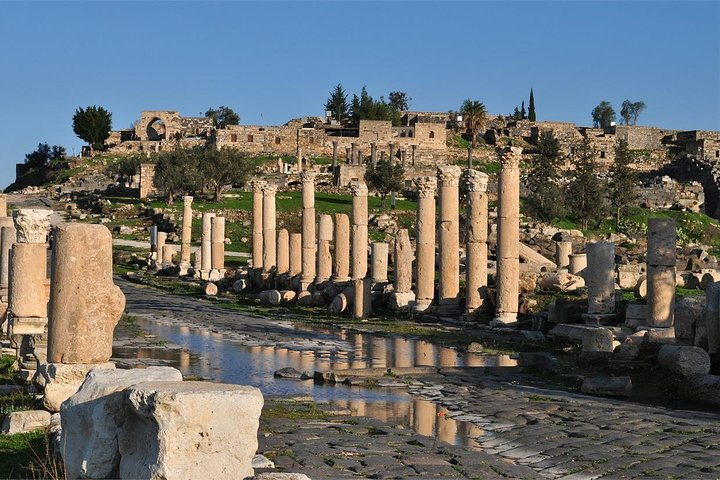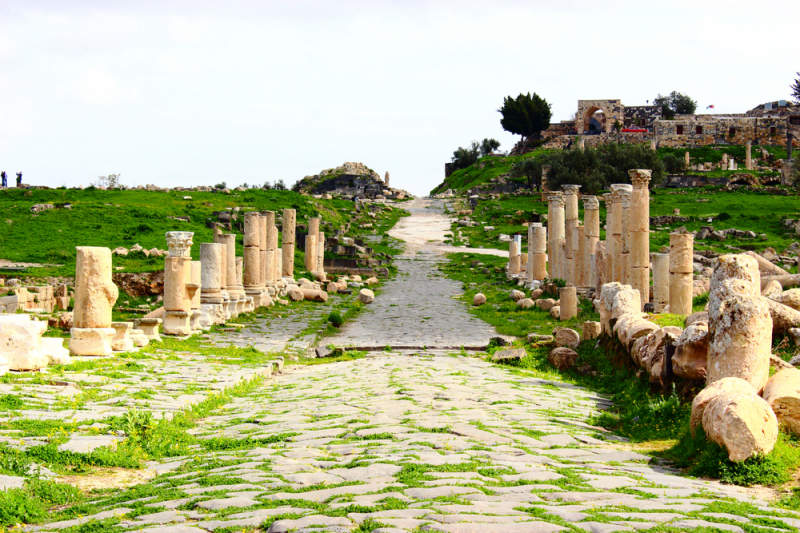Umm Qais
Umm Qais, also known as Qays, is a village in northern Jordan most known for its proximity to the ruins of an ancient Decapolis city, the Greco-Roman settlement of Gadara. It is among the most beautiful historical sites in Jordan.
Gadara, which was probably founded by the Greeks in the 4th century BC, was taken by the Seleucids then, in 63BC, by the Romans commanded by Pompey. It later fall under King Herod's jurisdiction.
Gadara was strategically located in ancient times, connected by a number of vital commerce routes between Syria and Palestine. It was endowed with good land and a plenty of precipitation. During Augustus' reign, this town developed academically as well, being known for its cosmopolitan culture and university scholars, attracting writers, artists, philosophers, and poets. For Christians, Gadara is also the location where Jesus is claimed to have performed the Gadarene swine miracle.
Today, Umm Qais retains Gadara relics such as a theater, churches, stores, a nymphaeum, spas, and paved roads. Many of the structures in Umm Qais, such as the theater, are formed of black basalt, which is an intriguing aspect of the sites. On top of the original Roman ruins, there are also Byzantine-era components. Umm Qais is also incredibly attractive, with the undulating hills of Jordan, Syria, and Israel surrounding it, as well as Lake Tiberias (the Sea of Galilee).












